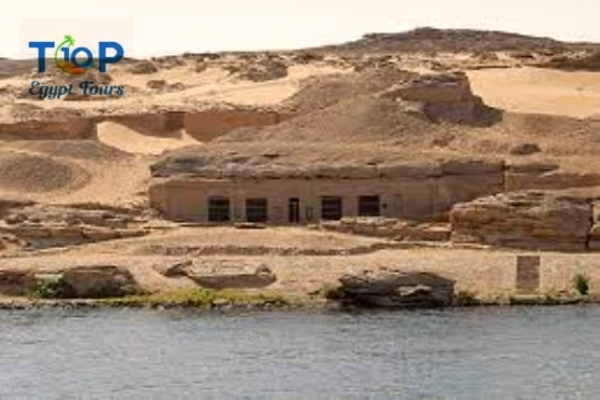Gebel El Silsila, nestled along the banks of the majestic Nile River, holds the secrets of ancient Egypt’s quarrying industry. This captivating archaeological site, situated between Luxor and Aswan, offers a unique opportunity to explore the quarries that provided the building materials for many of Egypt’s iconic structures. With its historical significance, geological wonders, and connection to ancient Egyptian civilization.
In this article, we will uncover for you the Gebel El Silsila with Top Ten Egypt
Historical Significance of Gebel El Silsila:
It holds immense historical significance in ancient Egyptian history. For over 1,000 years, this site served as a vital quarrying center during the New Kingdom and subsequent periods. The sandstone extracted from these quarries was used in the construction of numerous temples, tombs, and monuments, including the Karnak Temple, Luxor Temple, and the Ramesseum. Exploring the quarry of Gebel El Silsila allows visitors to witness firsthand the impact of quarrying on the grandeur of ancient Egypt’s architectural heritage.
Geological Wonders:
The quarries of Gebel El Silsila showcase impressive geological wonders. The site is characterized by towering cliffs of sandstone, revealing the layers of rock that were once skillfully extracted by ancient Egyptian quarrymen. Visitors can marvel at the sheer size and scale of the quarries, gaining a deeper understanding of the immense effort and ingenuity required to extract, shape, and transport the stone that formed the foundation of ancient Egyptian construction projects.
Quarrying Techniques and Inscriptions:
Gebel El-Silsila quarry provides valuable insights into ancient Egyptian quarrying techniques. Visitors can observe the remnants of ancient tools, such as chisels and wedges, which were used by the skilled craftsmen to extract the stone. The quarries also feature numerous inscriptions, including hieroglyphic texts and rock-cut shrines dedicated to deities like Hapi, the god of the Nile. These inscriptions offer glimpses into the daily life, religious beliefs, and royal patronage associated with quarrying activities at Gebel El Silsila.
Cultural Heritage Preservation:
The preservation and study of Gebel El-Silsila quarry reflect Egypt’s commitment to safeguarding its cultural heritage. Ongoing archaeological excavations, research, and conservation efforts ensure the site’s protection and provide valuable insights into ancient quarrying practices. By preserving the quarries of Gebel El Silsila, Egypt continues to honor and celebrate the craftsmanship and architectural achievements of its ancestors.
Educational and Recreational Experience:
Exploring it offers visitors a unique educational and recreational experience. Guided tours provide fascinating insights into the quarrying process, the lives of the quarrymen, and the historical context in which these activities took place. Additionally, the site’s picturesque setting along the Nile River allows visitors to appreciate the natural beauty of the surrounding landscape, creating a memorable and immersive journey into ancient Egypt’s quarrying industry.
It stands as a living testament to the quarrying practices that shaped ancient Egypt’s architectural landscape. With its historical significance, geological wonders, and commitment to cultural heritage preservation, the site provides a captivating glimpse into the ancient quarrying industry. As visitors explore its quarries, marvel at the geological formations, and learn about the craftsmanship of ancient Egyptian quarrymen, they embark on a journey through time, deepening their appreciation for the architectural wonders that have endured for millennia.
Browse our complete list of Egypt tours Click Here



Comment (0)